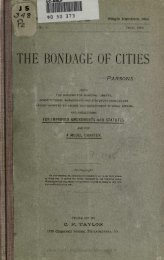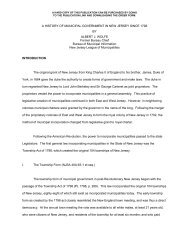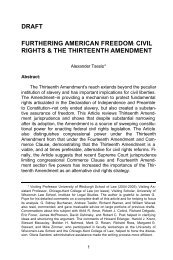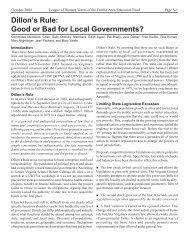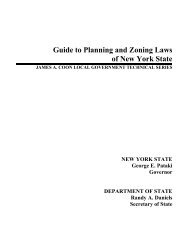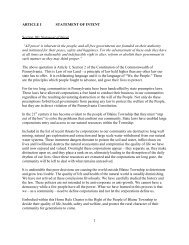The British Empire and Famine in Late 19th Century Central India
The British Empire and Famine in Late 19th Century Central India
The British Empire and Famine in Late 19th Century Central India
You also want an ePaper? Increase the reach of your titles
YUMPU automatically turns print PDFs into web optimized ePapers that Google loves.
po<strong>in</strong>t of total ext<strong>in</strong>ction.<br />
This meant that the graz<strong>in</strong>g l<strong>and</strong>s <strong>and</strong> common grounds<br />
virtually disappeared under the onslaught of colonial commercialization. <strong>The</strong> official<br />
term for designat<strong>in</strong>g such areas was „wastel<strong>and</strong>s.‟ For the <strong>British</strong> this meant l<strong>and</strong>s that<br />
did not generate revenues, hence uneconomic <strong>and</strong> therefore the need to make it<br />
productive <strong>and</strong> economic by putt<strong>in</strong>g it under the plough. But for people <strong>in</strong> the villages,<br />
these l<strong>and</strong>s were a part of their daily life <strong>and</strong> survival <strong>in</strong> times of calamities such as<br />
fam<strong>in</strong>e <strong>and</strong> drought. Its disappearance had serious repercussions. In the most populated<br />
pla<strong>in</strong> districts of Amraoti, Akola, <strong>and</strong> Buldana, the wastel<strong>and</strong>s completely disappeared<br />
fall<strong>in</strong>g under 1%. In other districts also, it fell below 2%. In Wun district it stood at<br />
about 5%. Every district experienced the problem of space <strong>and</strong> overcrowd<strong>in</strong>g. Amraoti<br />
<strong>and</strong> Akola district suffered the worst because of the topography. When cotton cultivation<br />
exp<strong>and</strong>ed <strong>in</strong> the 1860s, these two districts were the very first to be denuded of all tree <strong>and</strong><br />
forest cover. Most of the railways passed through these two districts. <strong>The</strong> population<br />
density got high <strong>and</strong> the ravage of drought, fam<strong>in</strong>e, disease, <strong>and</strong> death became <strong>in</strong>tense. 13<br />
<strong>The</strong> <strong>Empire</strong>‟s voracious appetite for revenues targeted the mobile people to<br />
sedentarize. <strong>The</strong> pressure of colonial <strong>in</strong>stitutions like the police, law <strong>and</strong> courts were<br />
employed to coerce pastoral nomads <strong>and</strong> forest dwellers to settle on the l<strong>and</strong> <strong>and</strong> take up<br />
agriculture. Further pressure of imperial revenues forced pastures <strong>and</strong> common l<strong>and</strong>s<br />
under the plough. Neeladri Bhattacharya <strong>in</strong> his study of the Punjab pastoralists shows<br />
how the extension of <strong>British</strong> control through punitive graz<strong>in</strong>g taxes hit the transhumance<br />
pastoral nomads while depriv<strong>in</strong>g the peasantry of the traditional graz<strong>in</strong>g runs <strong>and</strong><br />
common l<strong>and</strong>s. 14<br />
Thus the extension of the imperial arm deprived pastoralists of their<br />
ma<strong>in</strong> source of survival while survey operations extended <strong>and</strong> froze the boundaries of<br />
5






